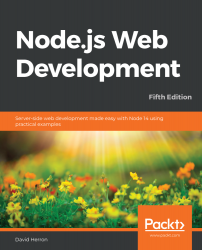Normally, you wouldn't install multiple versions of Node.js—doing so adds complexity to your system. But if you are hacking on Node.js itself or testing your software against different Node.js releases, you may want to have multiple Node.js installations. The method to do so is a simple variation on what we've already discussed.
Earlier, while discussing building Node.js from the source, we noted that you can install multiple Node.js instances in separate directories. It's only necessary to build from the source if you need a customized Node.js build but most folks would be satisfied with pre-built Node.js binaries. They, too, can be installed on separate directories.
Switching between Node.js versions is simply a matter of changing the PATH variable (on POSIX systems), as in the following code, using the directory where you installed Node.js:
$ export PATH=/usr/local/node/VERSION-NUMBER/bin:${PATH}
It starts to get...



